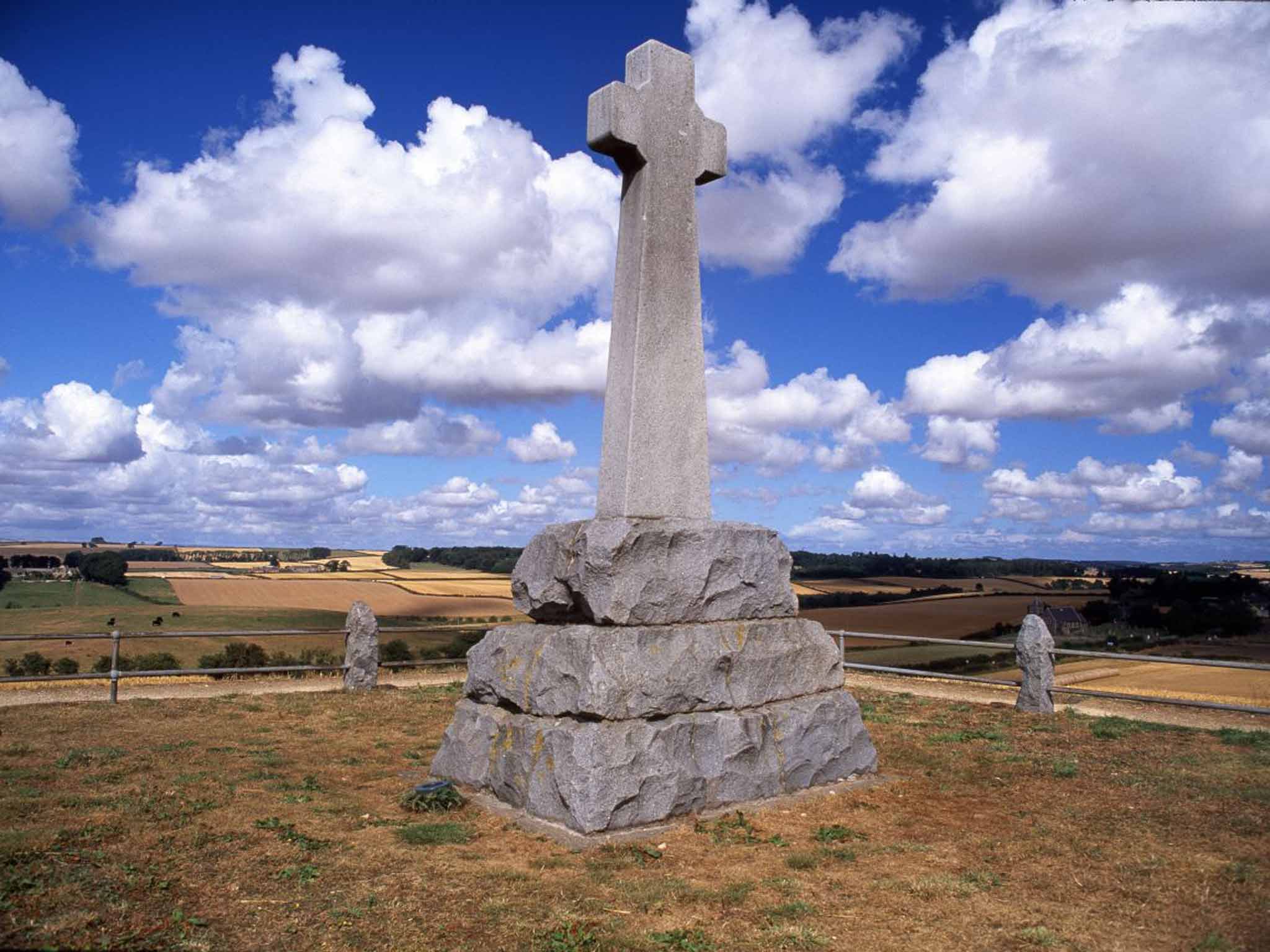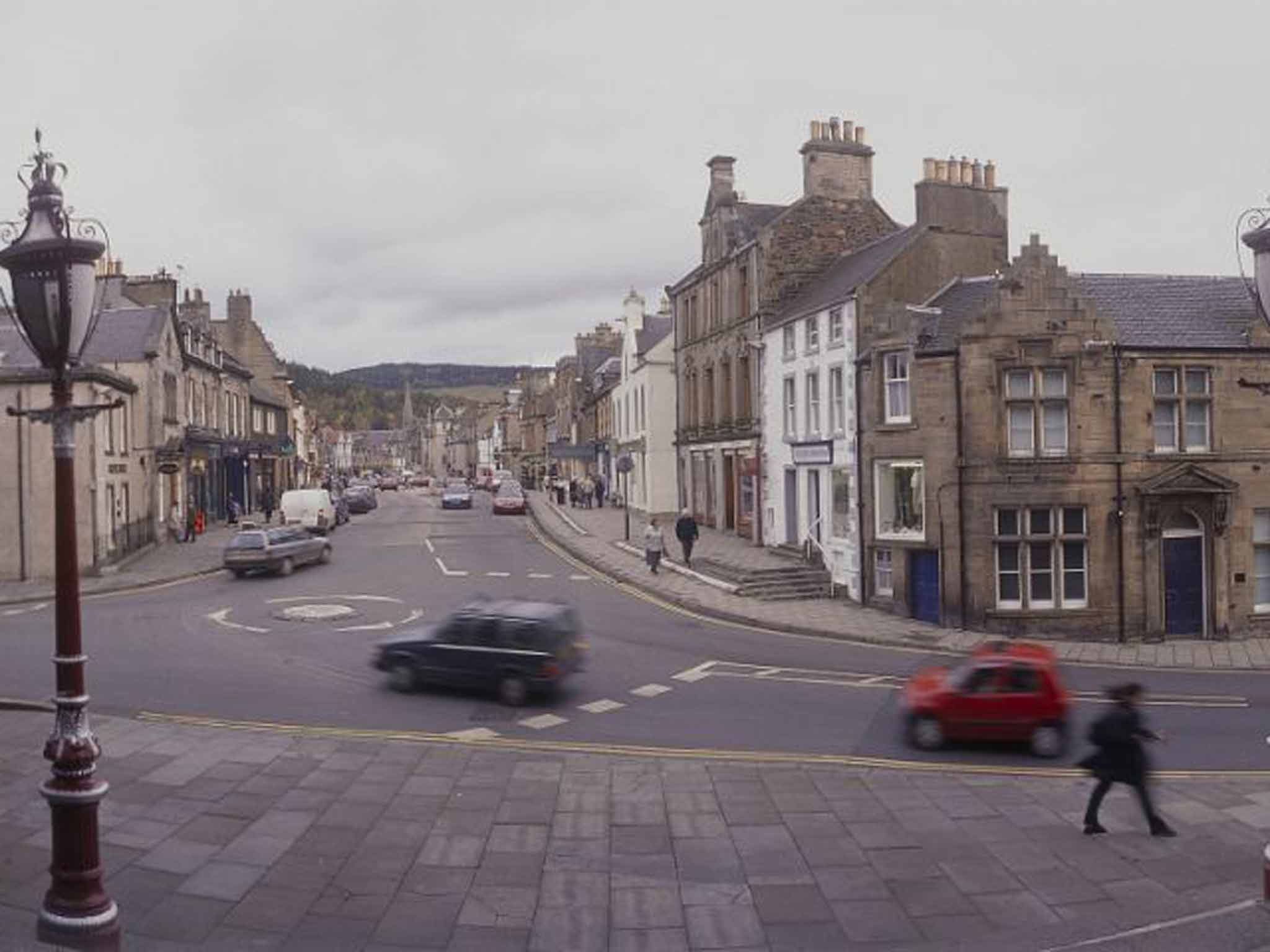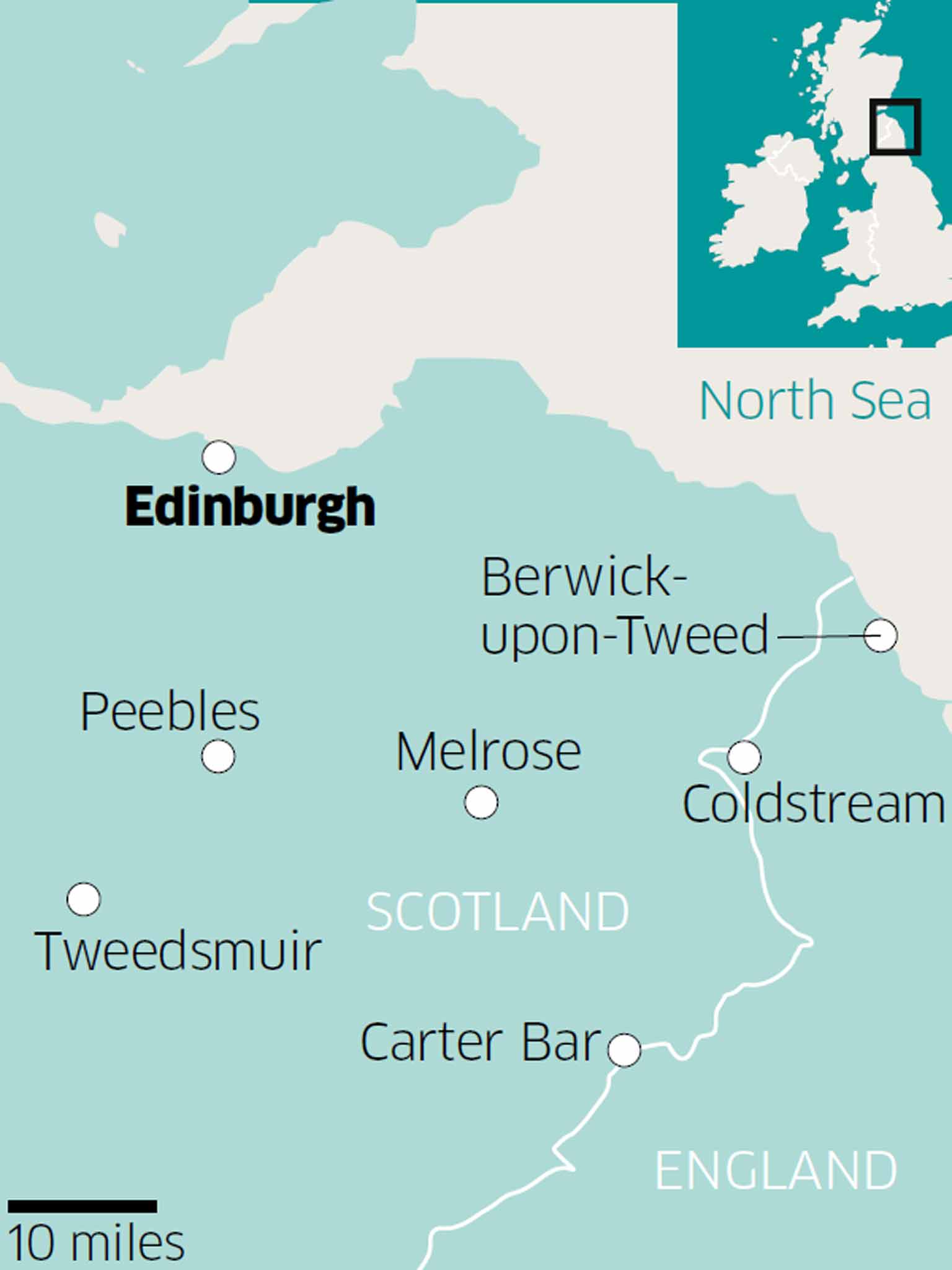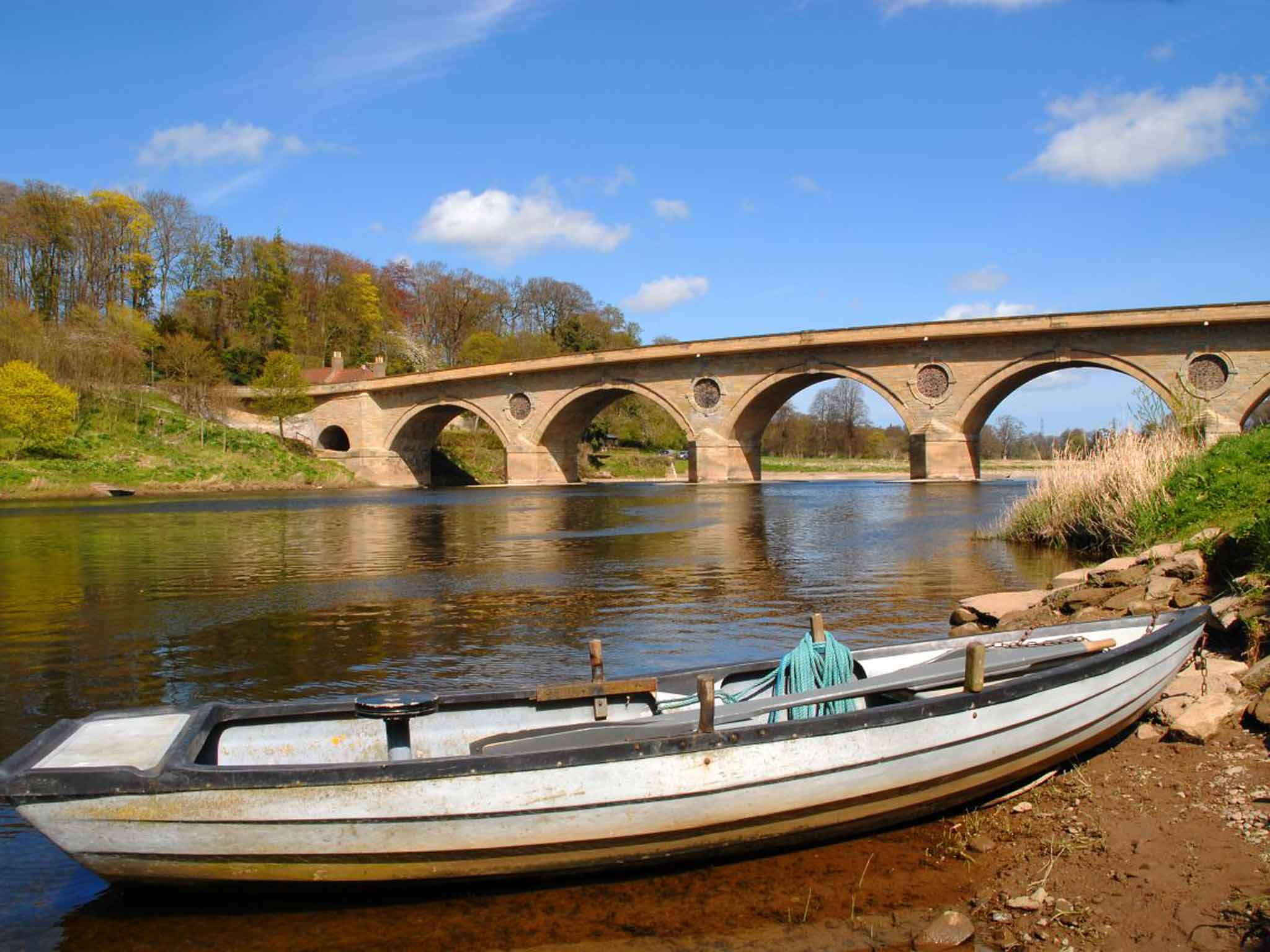Your support helps us to tell the story
From reproductive rights to climate change to Big Tech, The Independent is on the ground when the story is developing. Whether it's investigating the financials of Elon Musk's pro-Trump PAC or producing our latest documentary, 'The A Word', which shines a light on the American women fighting for reproductive rights, we know how important it is to parse out the facts from the messaging.
At such a critical moment in US history, we need reporters on the ground. Your donation allows us to keep sending journalists to speak to both sides of the story.
The Independent is trusted by Americans across the entire political spectrum. And unlike many other quality news outlets, we choose not to lock Americans out of our reporting and analysis with paywalls. We believe quality journalism should be available to everyone, paid for by those who can afford it.
Your support makes all the difference.However you reach them, arriving in the Borders is a euphoric experience. The drive over the Cheviots to the border pass at Carter Bar on the A68 is breathtaking; or you can breach their eastern flanks, by train through Berwick- upon-Tweed, by road along the A1, or on foot along the coastal path. Near Eyemouth and St Abbs, the east coast main line, A1 and coastal path converge, giving one another glancing blows as they thread their way above a fracturing coastline of sandstone headlands, seabirds and sea stacks.
I begin my journey on the east coast, at Eyemouth and wander among a handful of weather-creased fishing communities huddled beneath cliffs coloured claret with sandstone. Eyemouth's working harbour bustles at dawn with the unloading of fish against a backdrop of boats awaiting surgery in the boatyard's vast aircraft-style hangars. Some vessels, with their varnished wood, strangely recall the African Queen. The windows of houses are squared off in pastel shades, the town still has a Herring Queen beauty contest, and – this is the seaside – the quality of Italian ice cream is high, competition between rival outlets fierce.
The salmon-rich River Tweed, which runs for almost 100 miles through the Borders, escorts me for much of my visit. At its mouth, south of Eyemouth, stands Berwick, the English town with the Scottish football team and handsome Elizabethan walls. Historically, these lands and its people have overlapped. Berwick changed hands 13 times before finally becoming English in 1482, and, four miles west of town the border drops from north of the River Tweed to the middle of its fast-flowing waters. Here I came to the first of a production line of glorious Borders' stately homes, Paxton House. Made with great Palladian symmetry from handsome sandstone, it was built by Patrick Home, for the women he loved: that love went unrequited and he sold up, heartbroken. No one has yet promoted this tale as "The Taj of the Tweed", but I'm happy to start the campaign right here.

It's the sandstone that seals my love affair with the Borders. I encounter it everywhere, in civic buildings, Georgian town houses and most gracefully in the many honey-coloured bridges that arch over valleys and rivers.
Close to Paxton House is the exquisite Union Bridge, which has to be one of the world's most gorgeous border crossings; it's a miniature suspension bridge – for once not of sandstone – but built with wrought iron, that links the Borders to Northumberland. I briefly walk uphill into England to the Chain Bridge honey farm and buy a jar of intensely sweet Tweedside honey.
I find another of those fetching sandstone bridges in Coldstream, but the town's history is proof that, despite their beauty, the Borders have not always been so serene. Five miles out of town I reach the site of Flodden, a crushing defeat in 1513 that saw the death of James IV and 10,000 other Scots, at the cost of 1,000-4,000 English. A simple stone cross pays tribute to "the brave of both nations".
In one of those juxtapositions that travel throws up, I return in sombre mood to my car in the nearby village of Braxton where I stumble upon what claims to be the world's smallest tourist information centre, inside a red telephone box. It's a nice idea, and well executed.
All too often the Borders have been a riotous place, a turbulent land of migrants, marauders and princes. At the top of this chain of villainy were the Reivers – warring clans and families, sheep rustlers and general ne'er-do-wells. Between the 13th and 16th centuries these were the badlands of the British Isles. "To say the area has a turbulent history is something of an understatement," says Davy Ladd, a local guide who joins me for a walk along the Tweed at Coldstream. "The area has very rich farmland, you have people, sheep, cattle and horses – everything you need to create majestic wealth. Everyone wanted a piece of it. It was lawless." The Borders became known as the "debateable lands" – contested in perpetuity, with its benighted, beleaguered inhabitants unscrupulously switching allegiance, depending on whoever held the upper hand.
One legacy of all this conflict is an awful lot of damaged but beautiful buildings. These include a quartet of great abbeys founded in the Borders in the 12th century by David I at Jedburgh, Dryburgh, Melrose and Kelso. The abbeys were intended to drive the local economy by producing ink, wool, meat, fruit and cereals; they were also a useful buffer against the marauding English. Each has its own charms and all are must-sees: Kelso is the most ruined; Dryburgh is the most substantial and somehow supports a quivering, wafer-thin rose window; Melrose has surreal gargoyles and, some say, the heart of Robert the Bruce; Jedburgh's high arches appear to be effortlessly, invisibly, supported.
The towns that host these architectural splendours are exquisite, crammed with local shops and expressing an individuality long lost in many British towns. Kelso's great cobbled square is almost Flemish.
The civic pride is palpable and reaches an annual crescendo every summer with the Borders common ridings, where each town stages a festival and upholds the custom of riding out the bounds, reinforcing the edges of their territory on horseback. This is a land where the old county names of Berwickshire, Selkirkshire and Roxburghshire still have a resonating currency.

From Kelso, I drive south-east to the village of Kirk Yetholm, where, 25 years ago, I had my first reassuringly odd encounter with the Borders. Leaning on a fence, waiting for the pub to open, I watched a sheep leap clean over a stile. Before you write in, I know sheep can't do this. Perhaps it was just an exhaustion-inspired hallucination that visited me upon finishing the 268-mile Pennine Way, a route that breathes its last in the village.
Jumping sheep aside, I'd been surprised to discover that the Pennine Way limped over the Anglo-Scottish border and it's that memory that has brought me back here, a few weeks ahead of Scotland's date with destiny, the referendum on 18 September. I stand on the village green. To the south I can see the Toblerone-shaped hills of the Cheviots; to the north-east lies ... a finger-shaped parcel of England.
I'm suddenly struck by what a yes vote might mean in practice. The Scottish-English border resembles an electrocardiogram as it navigates rivers and hills on its seemingly contrary journey from the southern, central uplands of Scotland (confusingly, the Borders don't begin on the west coast) to the North Sea. Should Scotland grasp independence, the task of ironing the crinkles out of the red tape and patrolling an internationally recognised border could be a 13th labour of Hercules.
I head for Melrose. With its market square, local bookshops, florists and bakers it looks a little like Trumpton, though like many Borders towns, it learnt to hide away from the outside world. I strike out from the town, making for Scott's View, a vantage point beloved by Sir Walter Scott, who is buried at Dryburgh. His nearby home, Abbotsford, reopened last year after restoration, but from the brow of the hill Melrose is invisible, tucked away in a steep valley by the Tweed. What you can see, though, are the Eildon Hills, three volcanic plugs of lava, known to the Romans – who also made it up here – as Trimontium.
Up until now, I've been walking and driving through the Borders. It's time, I decide for some cycling. I embark on a 52-mile circuit from Innerleithen via the high passes above Lochs Talla and Meggett to Tweedsmuir and Peebles. I discover that the Borders, a hinterland between English and Scottish seats of power, has a hinterland of its own: lonely, empty moorland of the kind that would see nose-to-tail traffic in the Lake District.
Journey's end is Peebles. The legacy of the Border's tweed industry thrives here, with shops selling cashmere textiles, as well as fine art and tasteful interior furnishings. I pick up home-made pies, sausages and pastries at the butcher-baker WTS Forsyth and take a stroll along the ever-thrusting Tweed. Later, I mop my brow in Cocoa Black, a sumptuous chocolatier serving beautifully presented chocolates, Sachertorte and high-class versions of Jammy Dodgers and fudge fingers.
I leave the Borders by a different route, driving north to Edinburgh over the Lammermuir Hills. The landscape is punctuated by castles and towers. Along the way a river called the Blackadder raises a wry smile and I visit the gloomy kirk in Greenlaw, where the church spire retains its Rapunzel-esque bars from its former role as the village jail. Then, finally, I strike out from Duns to the hamlet of Longformacus and on to Gifford across a moorland landscape of extraordinary grace, but devoid of people, pinpointed by lonely hill farms.

I pull over to take a last stroll, reminded of something Davy had said. "People are so fixated on getting to Edinburgh," he'd sighed. "They rush through and miss the Borders. They're in search of the 'real Scotland' – bagpipes, kilts, whisky, claymores. They're missing out here on beauty, colour, great food and great places to visit. The Borders aren't touristy, it's a genuine experience. There's an awful lot buried here if you just slow down and take the time to look."
Getting there
Mark Rowe travelled to Berwick with East Coast rail (0345 722 5333; eastcoast.co.uk) which runs from London, York and Edinburgh.
Staying there
Mark stayed at Northumbrian House, Berwick (01289 309503; northumbrianhouse.co.uk), which has doubles from £100 per night; and Kingsmuir House, Peebles (01721 724413; kingsmuirhouse .co.uk) which has doubles from £120 per night.
Further information

Join our commenting forum
Join thought-provoking conversations, follow other Independent readers and see their replies
Comments